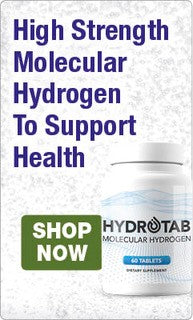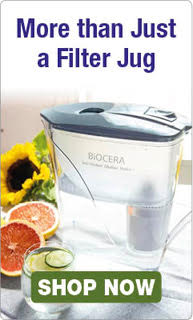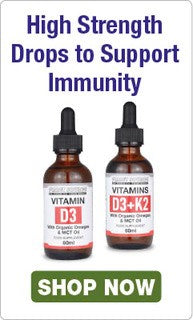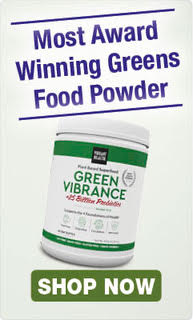Antioxidants are an essential component in the body's defense arsenal. They are used to fight free radicals that contribute to the pathophysiology of illness and premature aging. Free radicals can be harmful to the body if not cleaned out swiftly.
It’s important to ensure that our body has adequate amounts of antioxidants, particularly during cold and flu season. Antioxidants are found in foods as well as being produced in the body, and they are absolutely critical for health and wellbeing.
Interestingly antioxidants were initially studied in the 19th and 20th centuries for their ability to prevent metal corrosion and the fouling of fuels in combustion engines. The study of antioxidants in the human body is a relatively new approach to disease prevention and treatment.
The first antioxidants to be discovered were vitamin C and vitamin E, by Henry A. Mattill who fed whole foods to animals and found that they lived longer. We can measure the antioxidant content of foods and supplements by using the FRAP (ferric reducing ability of plasma) analysis test.
In this article, we'll explore what antioxidants are and how they work in the body; as well as taking a look at the most potent antioxidants.
How do Antioxidants Work?
Antioxidants donate electrons to unstable free radicals, which neutralises them and cancels them out.
Your body uses antioxidants to balance out free radicals. If there are too many free radicals in the body then it gets overwhelmed and this results in chronic oxidative stress.
Consuming an abundance of antioxidants is, therefore, a natural approach to combating oxidative stress and ridding the body of nasty chemicals.
IMPORTANT: Always opt for natural antioxidants as synthetic antioxidants such as butylated hydroxytoluene and butylated hydroxyanisole are reportedly dangerous for human health.
How are Free Radicals Bad for Human Health?
Free radicals are produced as a byproduct in the body when it carries out various chemical reactions, as part of the normal metabolic processes. For example, the breakdown of food into nutrients, or the building of muscle.
All of the reactions in our body produce waste; scientists call this cellular waste “free radicals”.
Free radicals are also produced in some pathological states and by the exposure to chemicals like tobacco smoke. Free radicals are either reactive oxygen species or reactive nitrogen species.
The hydroxyl radical (HO) is a notable example of a reactive oxygen species (ROS) free radical. You’ll notice that the HO molecule is one molecule short of water (H20), the missing hydrogen molecule results in a missing bond that can attach itself to other cells in the body and cause damage.
Free radicals change the make-up of lipids, proteins and DNA, as well as triggering a number of human diseases.
The cellular damage that free radicals can do is seriously detrimental to our health. To effectively manage disease, it’s important to ensure that the body is routinely cleansed of these harmful free radicals. The best way to do this is with antioxidants.
Types of Antioxidants

The term antioxidant refers to the ability of a compound to act as a free radical scavenger. Each type of antioxidant plays an important role in the body.
As the saying goes, “prevention is better than cure” and antioxidants are no different: the first line of defense is the “preventive antioxidants” that suppress the formation of free radicals.
Glutathione is the best example of a preventative antioxidant.
The second line of defense is antioxidants that travel around the body scavenging active free radicals. Some are water-soluble (hydrophyilic) or fat-soluble (lipophylic). Vitamin C, uric acid, bilirubin, albumin, and thiols are all water-soluble antioxidants. Vitamin E and ubiquinol are good examples of fat-soluble antioxidants.
Plant-based foods are rich in all forms of antioxidants. You can also get artificial antioxidants. The body makes its own antioxidants called “endogenous antioxidants”. The word endogenous means that they are created inside; exogenous antioxidants come from outside the body.
The types of antioxidants found in abundance in plant foods are as follows:
- Catechins
- Flavonoids
- Flavones
- Polyphenols
- Phytoestrogens
Berries are one of the best dietary sources of antioxidants, particularly anthocyanins (flavonoids), ellagic acid and resveratrol (polyphenols).
What are the Health Benefits of Glutathione?
As stated above, glutathione is our first line of defense and an essential antioxidant. Thankfully, the body can produce glutathione – but this process can be disrupted due to stress, toxic exposure, illness or poor nutrition.
The amount of glutathione in your body can be reduced due to a lack of sleep. Glutathione can also be found in foods, taken in supplement form or administered intravenously. Glutathione is made up of three amino acids – glutamine, glycine, and cysteine.
Glutathione can improve circulation and reduce oxidative stress, which can, in turn, help fight autoimmune disease.
Children on the autism spectrum have been found to have low levels of glutathione in their brains as well as higher levels of oxidative damage. Therefore boosting glutathione could reduce their susceptibility for further neurological damage.
Foods high in glutathione include: avocado, spinach, asparagus and okra
It’s important to note the amount of glutathione in foods reduces significantly with heating or processing.
Antioxidant Properties of Molecular Hydrogen

A more recent discovery of the beneficial antioxidant properties of molecular hydrogen (H2) has been made. Giving rise to hyperbaric hydrogen therapy being used as a treatment for metabolic syndrome, cancer and organ injury.
H2 (also known as dihydrogen) is a flammable, colourless, odourless gas that was previously thought to be inert in the human body. In 1975, high-pressure H2 was inhaled by animal models and a regression in tumours was found.
Related: Hydrogen-Rich Water as a Powerful Antioxidant
H2 has been studied extensively and found to have preventative and therapeutic effects on various organs of the body such as the brain, heart, pancreas, lung, and liver. H2 is a powerful mediator of oxidative stress, making it an effective contributor to disease treatment.
The Bottom Line
Although our bodies can naturally create antioxidants, this process can be disturbed by external or internal factors.
To ensure adequate antioxidants it is important to eliminate factors that reduce the number of antioxidants in our bodies such as toxins from cigarette smoke.
There is a wide range of antioxidants that can be consumed in plant-based foods. More recent discoveries of molecular hydrogen offer new and novel approaches to disease treatment and prevention.
Written by best-selling author and integrative nutrition health coach Rowanna Watson, who has a passion for natural health. Rowanna is an expert in all areas of holistic health, plant-based nutrition, detoxification and personal development.




























Leave a comment